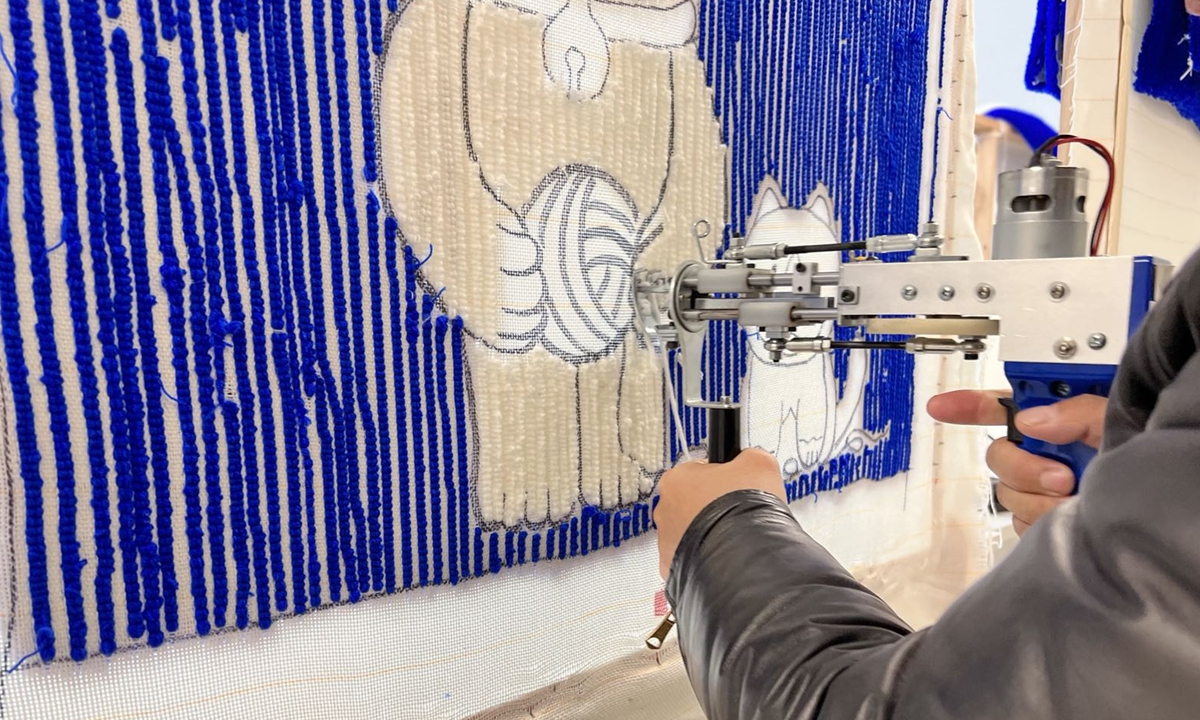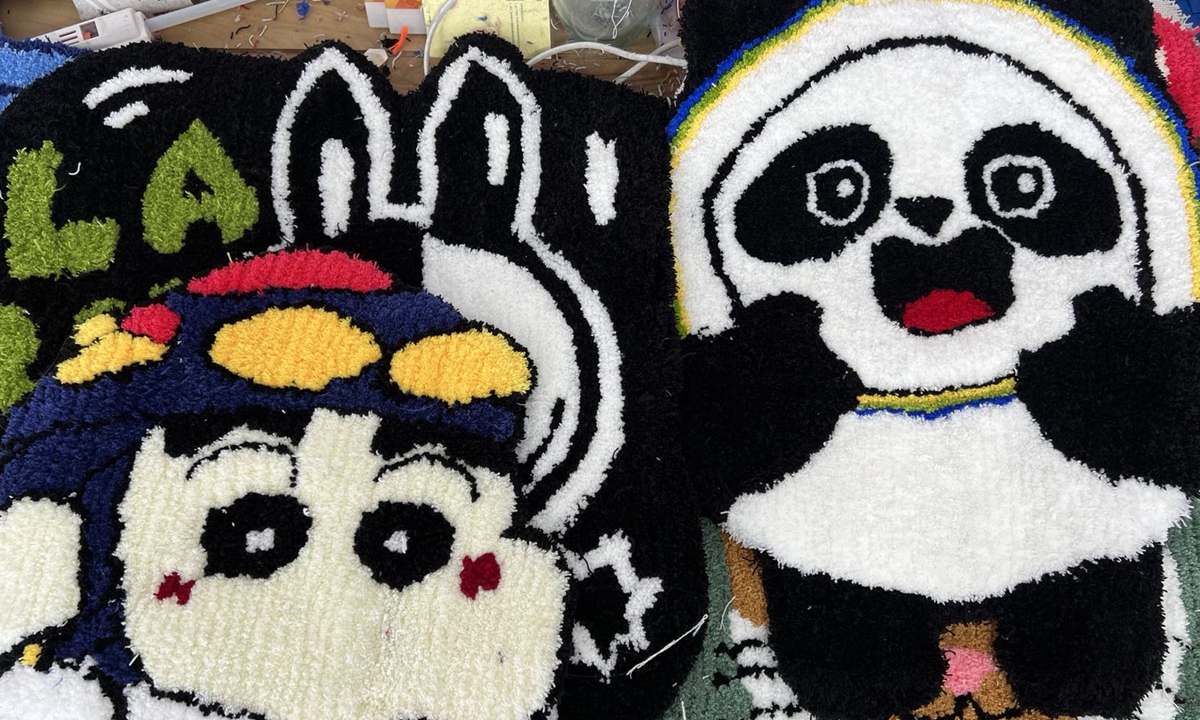
The owner of a tufting studio in Beijing demonstrates how to use a tufting gun. Photo: Lou Kang/GT

A Bing Dwen Dwen rug Photo: Lou Kang/GT
Buying a tufting gun to make DIY mats and rugs has grown extremely popular among young Chinese today due to the sense of accomplishment it brings. However, shop owners say that the future of this hobby is still up in the air as many customers are just "jumping on the bandwagon" of the latest fad.
Besides escapee room and murder mystery experiences, tufting is becoming a new way for young people to spend time together during the weekend across the country. One of the quickest ways to make carpets, tufting guns have existed for decades. With them, all you need is a few balls of wool and a piece of cloth to make a handmade rug for yourself.
Starting from the second half of 2021, tufting studios began to pop up nationwide. Take Shanghai for example, a total of 279 studios are on the online sharing platform Dazhong Dianping, and 400 can be found in Beijing as well.
"When I first learned about this industry in December 2021, there were like three studios in total in Beijing's Chaoyang district, but now over 10 studios have opened, including mine, within 100 meters of each other," Song, a tufting shop owner who runs a studio in an office building in the Chaoyang district in the capital, told Global Times on Saturday.
Quick arrival, fast departureAgainst the background of the COVID-19 pandemic, this handicraft has gained in popularity around the world since the end of 2020 as many artists and bloggers uploaded tufting videos on social media while staying at home. The plush texture and the rich colors of the rugs were a ray of sunshine for many people trying to adapt to the new pandemic normal.
This trend was then later introduced into China as influencers began to share their handmade works on Chinese social media. Before long, this hobby ended up giving birth to a new booming industry. Usually a studio will provide all the necessary tools and materials needed from tufting guns and different colors of wool to the canvas, and the last few steps of bottoming and edge sealing are also completed by the staff at the studios, so all customers need to do is to focus on making their favorite patterns.
"It can get really crowded with customers, especially on weekends, when we need to keep the door open from 11 in the morning until 12 midnight, waiting for all our customers to finish their work," another shop owner in Beijing surnamed Yu, who runs a studio called Wool Lab, told the Global Times on Monday.
Yu opened his studio with his business partners two months ago and has already managed to pay off the costs of his investment due to the rapid rise of the industry.
The steps are simple. The studio provides a projector to project the pattern customers chose onto a canvas. After the pattern is traced with a brush, customers can follow the pattern with a tufting gun. The entire creative process does not require any technical know-how and since it's easy to put decorative designs such as famous paintings on other things like a handbag. So it has become a hot trend in a short period of time over the past five months.
However, despite the current wave of success, many industry insiders have doubts about how long this trend ignited by internet celebrities will last before it becomes a thing of the past.
Song said that it normally takes at least five hours and costs 300 to 800 yuan ($47 to $125) to complete a work depending on its size and the complexity of the pattern, although "there is no limit to scope."
"And also this is actually a very tiring activity requiring the constant use of the tufting gun. It happens all the time where customers can't finish their work after sitting in the studio the whole day."
As for repeat business, "some customers come to our place because they really enjoy this kind of handicraft but as to the rest, they just jumped on the bandwagon to give it a go and won't return for another try," Song added.
"Although the cost of opening a studio like this is rather low, since each session takes a long time, we only get a limited number of customers each week... And we don't know how long this trend will continue."
Bringing embroidery backPeople in China have long had a love for embroidery. Around the turn of the century, Chinese cross stitching (shizixiu) became a huge fad and almost every household was buying embroidered handicraft items. Some of the more high-end patterns could cost more than 10,000 yuan.
Though this time-consuming hobby that required the use of small needles lessened in popularity with the rise of fast fashion and the development of smartphones and mobile internet, the speedy convenience tufting guns bring has brought it back.
"Compared with the traditional embroidery that China has embraced for centuries, which has a high-entry requirement and requires dedication over a long time, tufting's low threshold and fast returns just happen to meet the needs of the many people who pursue instant happiness nowadays," noted one embroidery expert, adding that the trend can be seen as beneficial as it has inspired more people in society to want to learn more about embroidery.





